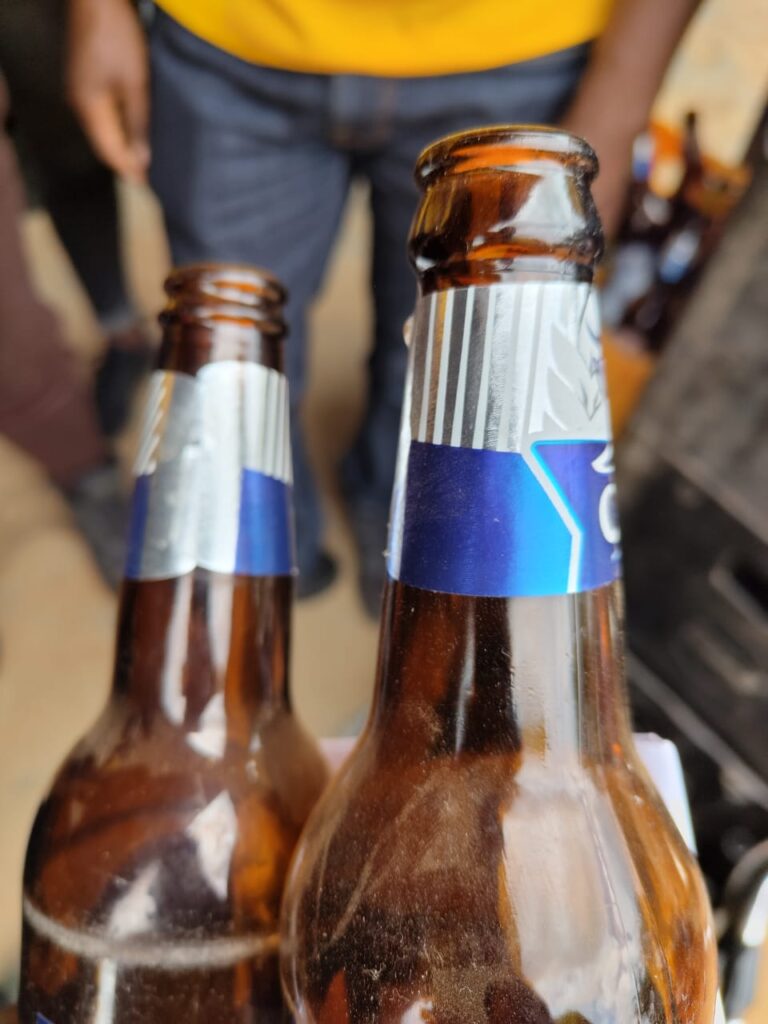One of the problems that has always intrigued me is the returnable glass problem aka empties. It’s just one of those problems that looks easy and obvious on the surface until you try to dive in. Here’s the problem. Let’s suppose you’re Uganda Breweries Limited (UBL). You send out 5 crates. A crate of Guinness, another of Bell Lager, another of Tusker Lite, and perhaps two of Pilsner. How do you ensure that by the time you are producing these brands on the line, you have just those bottles to facilitate production?
Here’s why it’s a complicated problem. When you send out those bottles, they go to a distributor. From the distributor, they go to a depot. And from the depot, they go to a bar or shop. When Ortega is buying beers in a bar, he doesn’t buy a whole crate. He will buy like 2 of Guinness and his friend gets one bottle of Bell. In that process, some bottles will break. There are also bottles that end up in homes. We call them sleepers. You pay for the bottle from the supermarket since you don’t have empties, but you never bother to return it.
That means, it gets to a point where UBL will want to produce Guinness, but it has more of the Bell bottles. It’s a problem that would be sweet for a logistics person to model, perhaps also, with a computer scientist or mathematician. There are many constraints to this model of returnables.
It doesn’t just affect beer companies or soda companies. Even the people of returnable water bottles such as Jibu. How do you manage this empties return? Often, logistics is a one-way channel. Here, you introduce a reversed channel.
The ideal scenario would be that when the UBL truck goes to Kabale to deliver fresh beers, it would return with empties equivalent to that number of full good. That’s never the case. We’ve spoken of breakages, we’ve spoken of differences in depletion rates, there’s also empties that spill-over across borders, there’s the sleepers (bottles in people’s homes). Then I also noticed when beers are being delivered to the islands, UBL crates are preferred over those of NBL. Like you can pack more beers into the UBL crates.
You could ask. Why doesn’t UBL just buy new bottles. It does. But it’s also not something that should always happen. A bottle is meant to cycle about 25 to 30 times or about 5 years. That means it is filled, emptied, returned, washed and refilled. That’s when you get the ROI on the bottle. Secondly, there are a few glass manufacturers in East Africa, and they run based on color schedules. For example, there’s a specific month when they will produce brown/amber bottles. There’s a month for flint or clear class. And if you miss that cycle, you don’t get scheduled.
Why does this problem excite me? Because it’s remained unsolved for years. No one seems to really crack it. If perhaps all the beers used the same bottle shapes, size and colour. But that’s not the case. As they target different segments. Oh. There’s also a dark market to this glass. And that further complicates this problem.
This is a million-dollar problem!
Let me hear from the drinkers…

